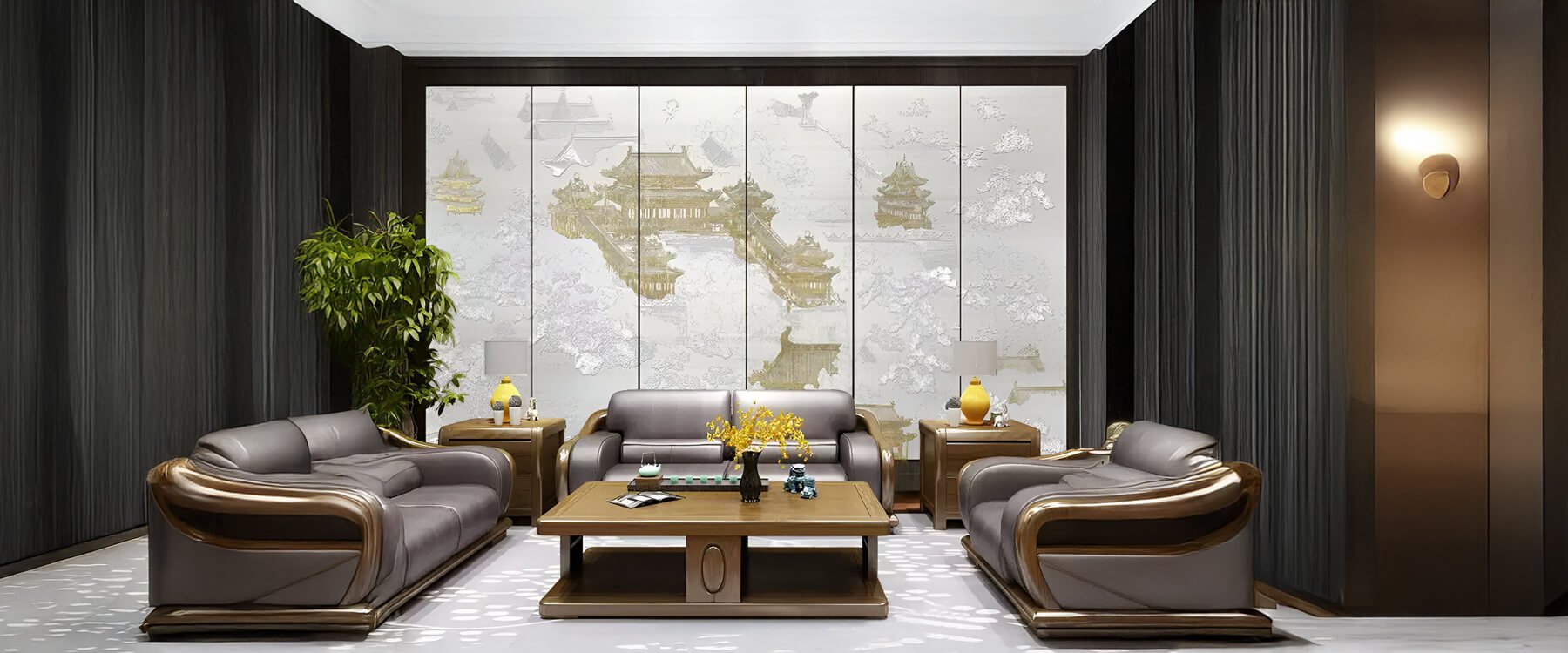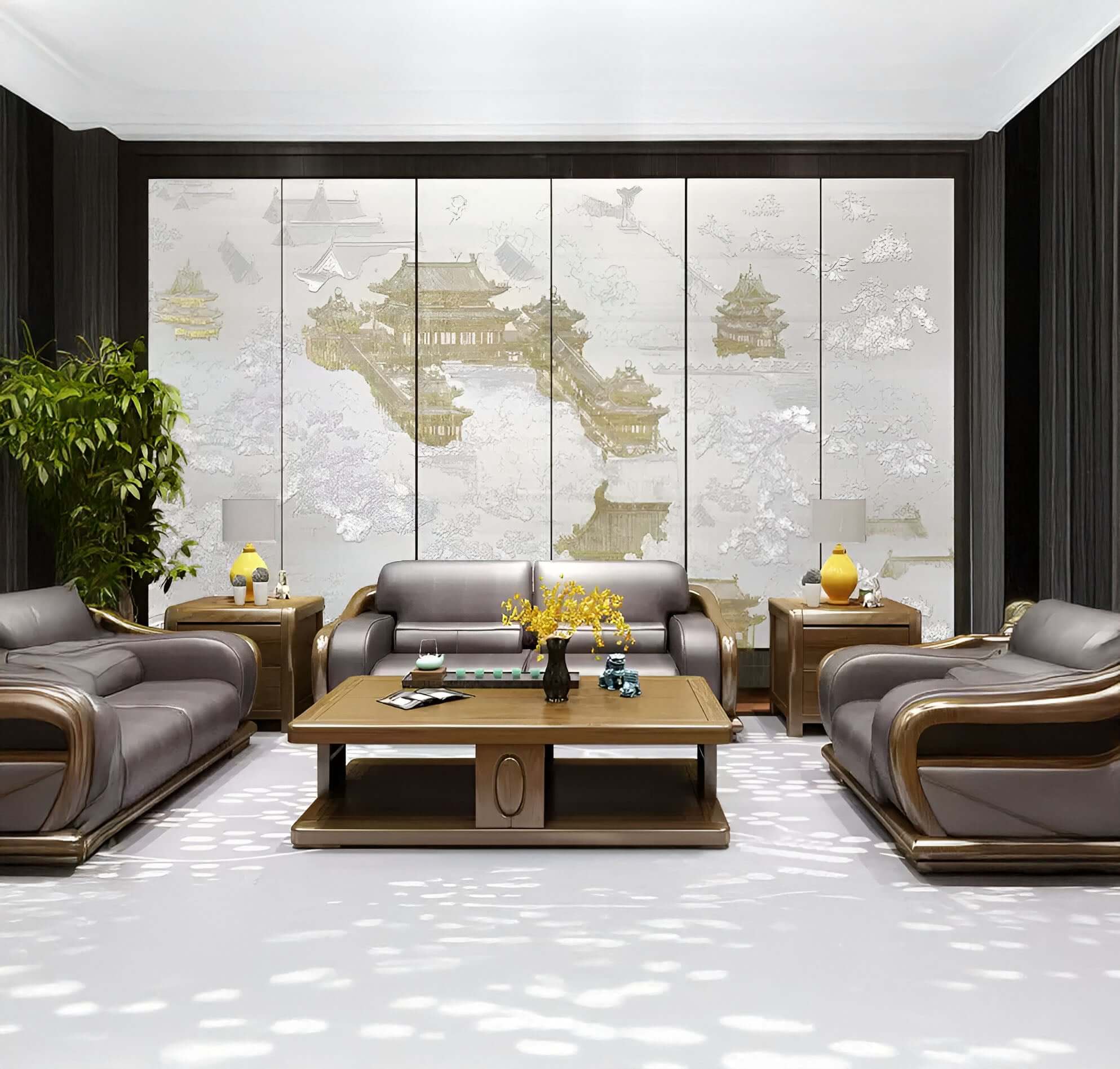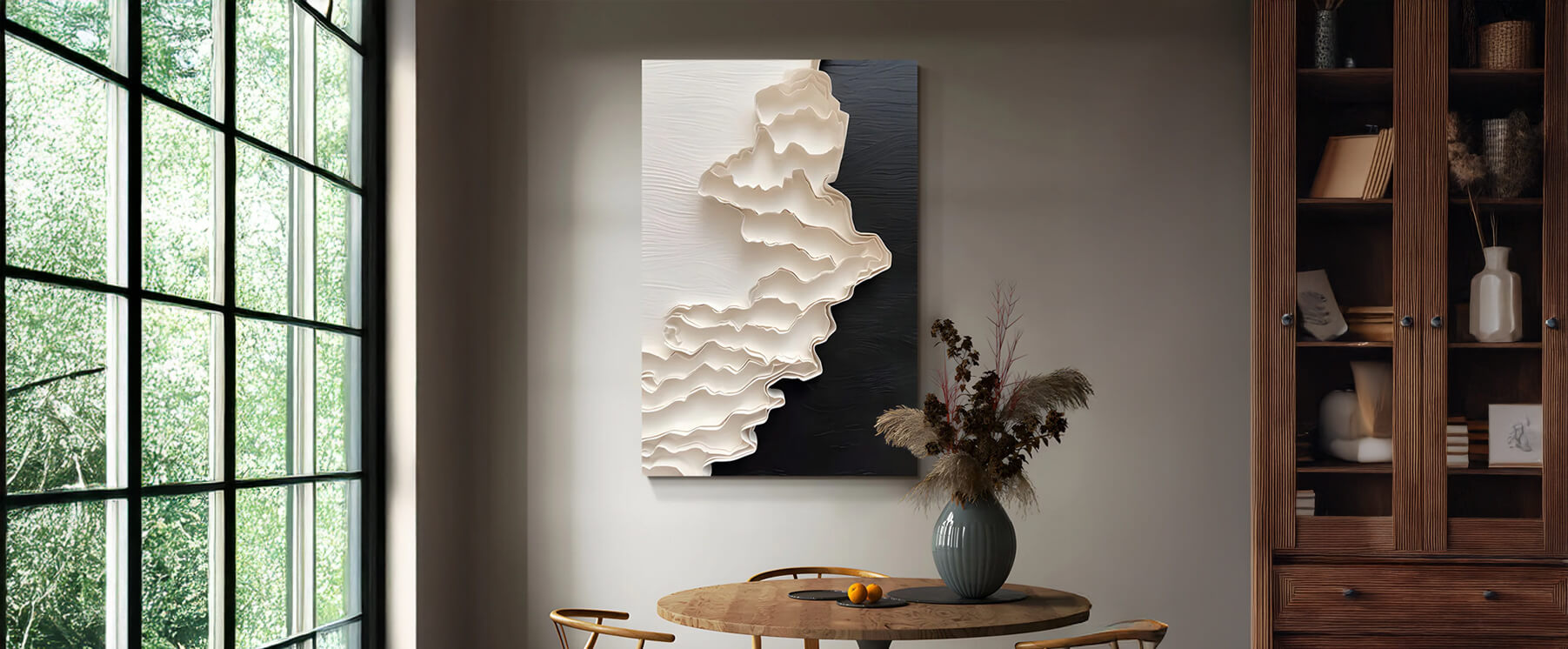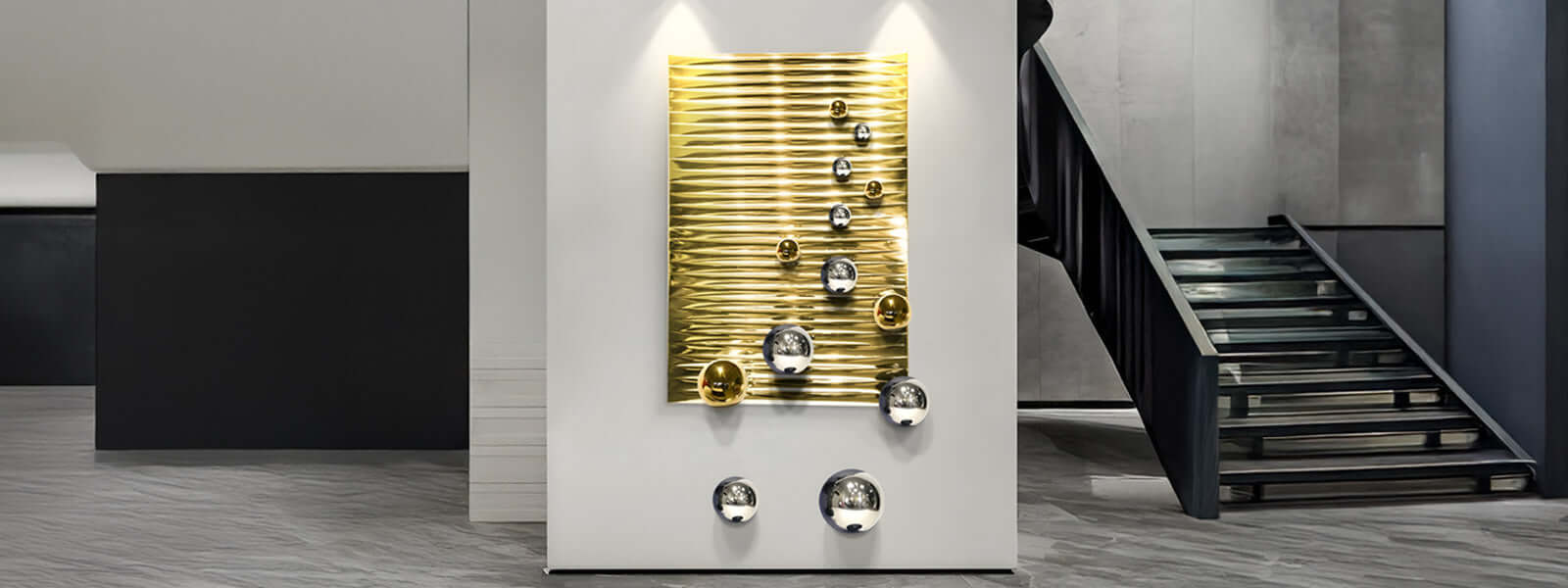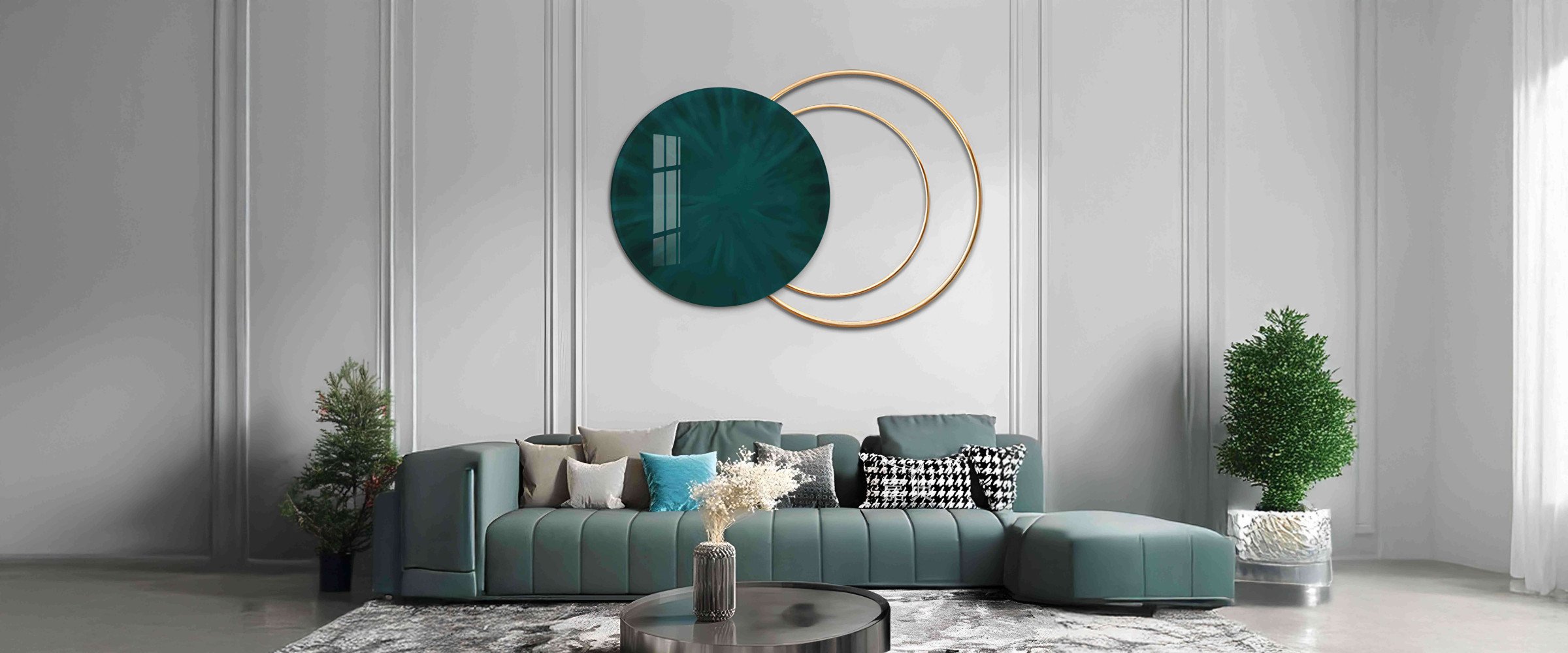When it comes to decorating a home, Landscape Art is often a favourite for its ability to draw the viewer into serene vistas or dramatic panoramas. However, even the most striking piece can fall flat if it isn’t positioned well. Hang it too high and no one sees the finer details; tuck it in a dim corner and its impact disappears. Poor wall art positioning is more common than you might think, leaving many homeowners frustrated when they don’t get the look they envisioned.
This guide aims to remove the guesswork by covering every essential aspect of hanging landscape paintings and displaying them at their best. We’ll tackle common placement mistakes, explore how lighting factors into the final look, and suggest room-specific tips so you can showcase your art like a pro. Whether you’re dealing with a single statement piece or a growing home gallery, these strategies will help transform your walls into a stunning exhibition of your favourite scenes.
Why Placement Matters for Landscape Art
You’ve found a painting that takes your breath away, maybe it’s a vivid seascape, a rolling countryside, or even an abstract art interpretation of nature. But did you know that the way you hang it can dramatically affect how your space feels?
Eye-Level Arrangement
When artwork is at or near eye level, it naturally becomes the focal point of the room. People often say the centre of your art should land around 57 to 60 inches from the floor, reflecting a common museum guideline. This “eye-level” rule makes it easier for guests to connect with the image whether it’s modern art, traditional art, or a distinctive geometric art piece.
Lighting Factors
Natural and artificial light can have a surprising impact on any landscape art display. A painting in direct sunlight might fade over time, while harsh overhead lighting can cause glare. On the other hand, thoughtful lighting like a soft spotlight, can enhance the details in your painting, drawing attention to subtle brushstrokes or colour gradients.
Visual Focal Points
A properly hung painting often becomes an instant conversation starter. By situating it where people’s eyes naturally fall - say, above the fireplace or behind a sofa, you underscore the piece’s importance. Conversely, if you hang a gorgeous work in a corner or at a mismatched height, its effect is diminished, no matter how stunning the painting itself may be.
Key Factors to Consider Before Placing Landscape Art
Though it might be tempting to hammer a nail into the wall and call it a day, taking a few preliminary steps can help you avoid headaches down the road.
1. Room Function
The purpose of each room directly influences your art choices and positioning. A tranquil piece in the bedroom art category might feel ideal above a headboard, while a bright, energetic scene might better fit a busy living room art arrangement where family and friends gather.
2. Lighting Conditions
Proper lighting is crucial for revealing all the nuances in landscape paintings:
- Natural Light: If your painting is near a large window, check how sunlight hits it at different times of day. Too much direct sun can fade certain paints.
- Artificial Light: Overhead fixtures, floor lamps, or wall-mounted lamps can highlight specific sections of your painting. Be mindful of potential glare, especially if your painting has a glossy finish.
3. Wall Space Dimensions
- Large Wall Decor: A massive painting on a small wall can feel overwhelming, while petite artworks on expansive walls get lost. Always measure your wall before committing.
- Minimalist or Bold Themes: A subtle, airy painting might need more negative space, whereas an intense, dramatic piece can hold its own in a busier setting.
4. Furniture Layout
Whether it’s a sofa in the lounge or a desk in your office art nook, the space between furniture and the painting affects how harmonious the room looks. A painting doesn’t stand alone, it should engage with its surroundings.
5. Artwork Style and Frame
Does your painting have a classic wooden frame or a sleek metal one? A matching frame can tie the piece seamlessly into your room’s design. The artwork’s style also dictates how much attention it should command. Intricate frames might clash with a modern minimalist setting unless carefully balanced.
Step-by-Step Guide to Proper Landscape Art Placement
Ready to hang your treasured painting? Follow these steps for a foolproof approach.
1. Measuring the Ideal Height
The rule of thumb is to place the painting so that the centre is about 57–60 inches from the floor, this is your “eye-level placement.” However, adjust for your household’s average height if necessary. If everyone in your home is particularly tall or short, feel free to tweak this guideline.
2. Considering the Width of the Artwork
When hanging a piece over furniture like a console table or sofa, aim for the painting to span about two-thirds to three-fourths of that furniture’s width. This ensures visual balance so the painting neither overwhelms nor looks lost above your furniture.
3. Marking the Spot
Use a light pencil mark or a piece of removable tape to outline where the top corners of the frame will be. Stepping back to view it from different angles helps you confirm you like the positioning before putting any holes in the wall.
4. Hanging Tools and Techniques
- Hanging Anchors: If your walls are plaster or drywall, choose appropriate anchors that can support the weight of your painting.
- Hooks or Rails: For larger or heavier landscape paintings, opt for stronger hooks or a rail system that distributes the weight more evenly, essential for heavier statement pieces.
- Artwork Mounting: Ensure the wire or brackets at the back of the frame are secure. Test them with light pressure before you hang the painting.
5. Checking Final Placement
After the painting is hung:
- Artwork Spacing: Look at the gap between your painting and nearby furniture or décor, does it feel comfortable for the eye?
- Furniture Alignment: Make sure it’s centred above or near the key furniture piece.
- Lighting: If there’s glare, reposition lamps or consider installing adjustable lighting to fully enjoy your painting’s details.
Room-by-Room Landscape Art Placement Suggestions
Different rooms demand different approaches. Here’s how to tailor your art interior design for each living space.
Living Room
A living room is often the social hub, so it’s a prime location for impactful landscape art:
- Above the Sofa: Position the bottom edge of the frame about 8–10 inches above the sofa’s back. This keeps the painting visually connected to the furniture.
- Coordinate with Colours: If your furniture and cushions have a specific colour palette, choose paintings whose tones either complement or add a subtle contrast.
Bedroom
Your bedroom should be a haven of relaxation:
- Over the Headboard: A calm, serene scene can evoke feelings of tranquillity. Keep it at a height that doesn’t overpower the bed.
- Minimal Clutter: Avoid placing too many items around the painting. A single piece of bedroom art can serve as a gentle focal point.
Dining Area
The dining room can be an understated showcase for landscape paintings:
- Centre on the Main Wall: Whether you choose one large painting or a few smaller ones, ensure they don’t fight for attention with a busy table setting.
- Warm Lighting: Soft lights can highlight the scene, making mealtimes feel inviting.
Home Office
For a productive office:
- Behind or Opposite the Desk: A piece that inspires creativity can give you a morale boost during work hours.
- Avoid Glare: Tilt your monitor and the painting so neither becomes a reflective nuisance.
Hallway
Hallways often get overlooked, but they can be ideal for landscape art display:
- Eye-Catching Focal Points: One or two pieces placed along a corridor can turn a pass-through area into a mini gallery.
- Spacing: Leave enough room so people won’t brush against the artwork as they walk by.
Common Mistakes in Landscape Art Placement
Even seasoned decorators make errors. Be mindful of these pitfalls to avoid them yourself:
- Hanging Too High or Too Low: Many people mount their paintings too close to the ceiling. Aim for that eye-level sweet spot.
- Ignoring Room Proportions: If a painting is too big for the wall, it overwhelms; if it’s too small, it may feel like an afterthought. Good proportional placement is key.
- Forgetting About Light Sources: Glare can obscure your painting’s details, while insufficient light can sap its vibrancy.
- Not Considering Frame Style: A mismatch between the painting, its frame, and your room’s décor can disrupt the overall aesthetic. Strive for harmony with decor.
Conclusion: Experience the Full Impact of Landscape Art
Placing landscape art in the right spot can transform any room from plain to extraordinary. By focusing on simple steps like eye-level placement, balanced proportions, and thoughtful lighting, you’ll ensure that each piece tells its story exactly as it was meant to. Whether you’re drawn to modern art or prefer the classic look of traditional art, these guidelines will help you turn an empty wall into a show-stopping feature.
Ready to explore new possibilities for your own interior? Check out the Giant Sculptures Landscape Art Collection for a curated selection of breath-taking pieces. Feel free to share your decorating experiences and questions with us, we’d love to hear how you’re showcasing your favourite views at home!


































































